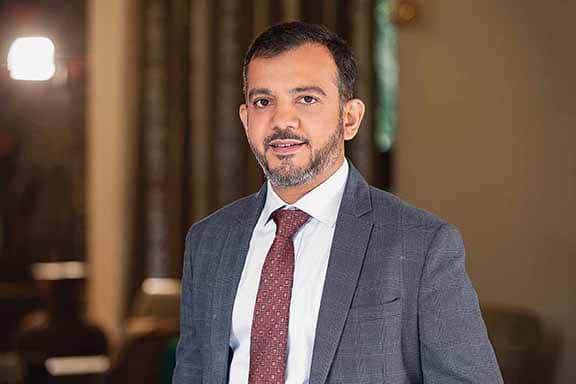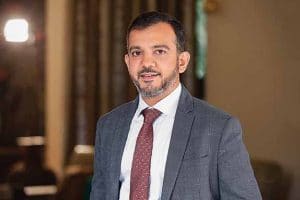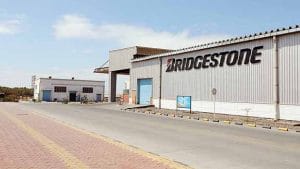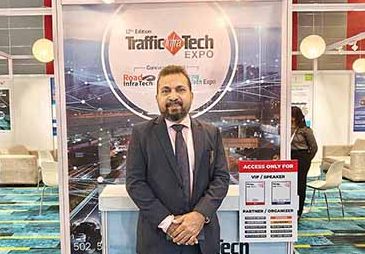In an Upfront and exclusive interaction, Parag Satpute, Managing Director at Bridgestone India opines that its time to increase the supply to meet the rise in demand. Ashish Bhatia with bureau inputs highlights the changes in tyre manufacture and business for the company.
Q. How will tyre retail evolve with the new Bridgestone Select + store?
A. Bridgestone India has always led the change in the consumer experience with our superior offerings. This started with introducing products that were durable and designed for Indian road conditions. To deliver the best product experience we introduced Bridgestone Select outlets in India where tyres purchase and all tyre related services could be availed at one stop. This has been a successful retail format for us. However, it is a known fact that tyres as a vehicle component garner far less involvement from consumers, in spite of them being a major contributor to overall vehicle performance and safety. The Bridgestone Select + stores are conceptualised to provide a solution for this issue. It takes a lot to make a superior tyre and there are multiple factors to consider before consumers make a pick. And, Bridgestone as a technology leader is taking a lead in sharing our knowledge and expertise so that consumers can make a more involved and informed decision.
Q. How are you going to integrate an educational experience in tyre retailing?
A. Most of the consumers are busy executives or modern millennial who are less aware of tyre and car maintenance details but seek a lot of control and information. Consequently, there is a trust, information and convenience deficit between car maintenance providers and consumers. The Select + tyre retail format cures the trust and information deficit. These stores feature digital-led experience in choosing tyres, understanding various tyres and their relevance to the consumers’ driving needs. Tyre consultation is no longer limited to taking the best guess on tyre price but helps the consumer identify the most suitable choice depending on their car type and driving conditions. The process is enabled through an interactive digital kiosk where customers can pick between an array of choices offered by Bridgestone.
Q. Is there a lack of know-how from the buyers perspective resulting in inappropriate choices?
A. As I mentioned earlier, tyres do garner a lower involvement when it comes to overall vehicle experience. One only pays attention to tyres when they need to be replaced or in case of damage. With our new concept stores, we want our customers to be more aware of not only buying the right tyres but also adopt the right tyre services that can give them longer tyre life and savings.
Q. What is the current sales network and what is the expansion plan to build on this new store launch?
A. We currently have more than 450 select stores pan India. For the new Select + stores, we have launched the first outlet in Pune and there are plans to expand in major metros by end of 2021.
Q. How are you leveraging the accelerated digitalisation?
A. Digitalisation has been a boon in 2020. Not only did it enable us to innovate and extend services to our customers in a safe environment but it also underlined our resilience and agility as an organisation. Our Contactless Tyre Servicing platform called ‘Bridgestonebookmyservice’ enables customers to take an online appointment in a few clicks, making them spend less time in outlets with these pre-planned visits. The planner will also allow Bridgestone channel partners to implement appropriate social distancing measures at the outlets, which are necessary in times of the COVID-19 pandemic. Apart from this, there are multiple digital platforms launched to support our dealer community and ease of doing business.
Q. How tricky is inventory management given the volatility of demand from both the OEM and aftermarket perspective?
A. The demand has been buoyant rather than being volatile thereby putting stress on our inventory levels. It’s a nice problem to have. The bigger concern has been the shipping line crisis especially from South East region which is our major source of raw material. However, an agile approach has enabled us to circumvent this challenge successfully.
Q. In H2-2020 we’ve heard of a shortage in performance tyres for the aftermarket? How has the industry tackled this situation?
A. We have embarked on an accelerated program to develop the performance tyres which have reasonable demand. In the meanwhile, the government has also issued approval for the import of the category of tyres that are not domestically manufactured. Hence the vacuum will be filled soon enough.
Q. How are you managing the supply chain even if it translates to hand holding your partner suppliers/ancillaries in the chain?
A. Yes, 2020 has been quite challenging for all businesses and it is through close collaboration with our suppliers and dealers that we have gained accelerated momentum. Our vetting process ensures our partners/ suppliers have the resilience to overcome challenges. Thereby ensuring that the system is intact and works with agility. During the pandemic, our focus on safety and quality also translated into ensuring that our suppliers and partners did not compromise on these factors, especially amidst a crisis of this magnitude. For dealers, we also rolled out support in terms of ease of doing business including stock liquidation program, timely incentive payouts etc. This combined with innovative solutions led to more business for them.
Q. Did the vehicle OEMs handhold you (and tyre manufacturers on the whole) through this pandemic marred financial year? What were some of the initiatives to ensure sustenance in the chain, from tier1s to beyond?
A. The pandemic spared no one, the entire automotive sector’s ecosystem was impacted. One of the reasons that the automotive sector came through this situation was that they were respectful of the limitations that all of us faced.
Q. What is the latest on input raw material (natural rubber)? Any collaborations and new markets tapped as a counter-strategy?
A. As you may be aware the natural rubber prices are on an upward trajectory. It is a commodity product, of course, we do pay some premium for sourcing quality products. However, the pandemic has steered us to find local quality alternatives and we have a balanced supply chain from local and imported sources.
Q. Has the government done enough to ensure a stable ecosystem?
A. The government’s intervention in stabilising the automotive ecosystem has been welcomed and well-received. The PLI that they have announced for the auto component sector is a welcome step. Their support to the MSME sector, which forms a major part of the auto ancillary industry has also helped revive confidence
Q. Your take on the introduction of label rated tyres on the lines of EU?
A. In the Indian context, labelling is applicable for rolling resistance and wet braking impacting fuel efficiency and safety respectively. It would surely enhance the awareness of consumers and steer away from price-led decision making to a more informed one.
Q. How have exports fared in comparison? Any impact of growing protectionism and the post-Brexit trade dynamics?
A. We are focused on the Indian market as of now and are committed to providing the Indian market with quality products.
Q. When do you see the company and the tyre industry as a whole fast track recovery and attain growth on a near medium-term basis?
A. The tyre industry is slowly moving towards normalcy. The fact that we at Bridgestone India have resumed three shifts at both our plants in Indore and Pune is an indication that demand has increased and hence the need to increase supply.
——————————————
Parag Satpute assumed the role of Managing Director of Bridgestone India in November 2017. Passionate about driving positive change, he has been spearheading Bridgestone’s goal of becoming a Dan Totsu in the Indian market. Parag attended Warwick Business School, Stockholm School of Economics, and the International Institute of Management Development.











Leave a Reply